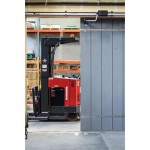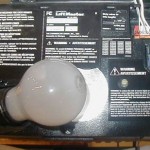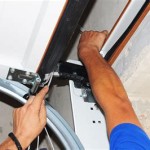How To Reattach a Garage Door Chain
A detached garage door chain represents a common yet frustrating issue for homeowners. When the chain comes loose, the garage door opener ceases to function, leaving the door potentially stuck in an open or closed position. Fortunately, reattaching a garage door chain is a task that most homeowners can accomplish with the proper tools, understanding, and adherence to safety precautions. This article provides comprehensive instructions for successfully reattaching a garage door chain. It emphasizes the importance of safety and outlines the steps involved in diagnosing the problem, gathering necessary materials, and performing the reattachment procedure.
Safety First: Disconnecting Power and Assessing the Situation
Prior to undertaking any repair of a garage door system, safety must be the foremost priority. Garage doors are heavy and complex mechanisms, and mishandling them can lead to serious injuries. The initial step involves disconnecting the power supply to the garage door opener. Locate the electrical outlet that powers the opener, usually situated on the ceiling near the unit. Unplug the opener from the outlet to prevent accidental activation during the repair process. This simple act significantly reduces the risk of electrical shock or unexpected movement of the door.
Following the power disconnection, a thorough assessment of the situation is necessary. Carefully examine the entire garage door system, paying close attention to the chain, sprockets, trolley, and tension springs. Identify the point where the chain detached and look for any signs of damage or wear. Check the chain for broken links, kinks, or excessive slack. Inspect the sprockets for worn teeth or misalignment. Examine the trolley, which connects the chain to the garage door, for any signs of damage or looseness. Look for any obstructions that might have caused the chain to come loose, such as debris or frozen tracks. Understanding the underlying cause of the detachment is crucial for preventing future occurrences.
If the garage door is in the open position, use clamps or locking pliers to secure the door in place. This prevents the door from accidentally closing during the repair process, which could cause injury or damage. If the door is closed, proceed with caution, as the tension springs may be under considerable stress. Consider seeking professional assistance if the springs appear damaged or if you are uncomfortable working with them. The safety of the individual performing the repair should always be prioritized above all else.
Gathering Necessary Tools and Materials
Having the right tools and materials readily available streamlines the reattachment process and ensures a successful outcome. A basic toolkit should include the following:
- Adjustable wrench: For tightening bolts and nuts.
- Pliers: For gripping and manipulating small parts.
- Screwdriver (Phillips and flathead): For loosening and tightening screws.
- Socket set: For tightening bolts and nuts of various sizes.
- Work gloves: To protect hands from dirt and injury.
- Safety glasses: To protect eyes from debris.
- Ladder or step stool: To safely reach the garage door opener.
- Replacement chain links (if needed): To repair a broken chain.
- Lubricant (garage door specific): To keep parts moving smoothly.
A garage door specific lubricant is important to use. Chain lubricants are typically lithium-based greases designed to adhere to the chain and provide long-lasting lubrication under the operational stress of a garage door system. Use of non-specific lubricant can lead to early chain failure.
Before proceeding, ensure the work area is well-lit and free of obstructions. Proper lighting allows for clear visibility of all components, reducing the risk of errors and accidents. A clean and organized workspace promotes efficiency and safety.
The Reattachment Procedure: Step-by-Step Instructions
With the power disconnected, the situation assessed, and the necessary tools gathered, the reattachment procedure can commence. This process involves several steps, each of which requires careful attention to detail.
Step 1: Realign the Trolley: The trolley must be properly aligned with the garage door opener rail. If the trolley has moved out of position, manually slide it back onto the rail. Ensure that the trolley is oriented correctly, with the connecting point facing the chain. Some trolleys have a release mechanism that disengages them from the opener. If this mechanism is engaged, disengage it before proceeding.
Step 2: Reconnect the Chain to the Trolley: The chain is typically connected to the trolley via a bolt or clevis pin. If the chain has simply slipped off, realign it and reinsert the bolt or pin. Secure the bolt or pin with a nut or clip to prevent it from coming loose again. If the chain has broken, replacement links may be necessary. Remove the damaged links and connect the new links using pliers or a chain tool. Ensure that the new links are properly secured and that the chain is the correct length.
Step 3: Adjust Chain Tension: Proper chain tension is essential for smooth and reliable operation. The chain should have a slight amount of slack, but not so much that it sags excessively. Most garage door openers have a tension adjustment mechanism, typically located near the motor. Use an adjustable wrench to tighten or loosen the tension adjustment bolt until the chain has the correct amount of slack. Avoid over-tightening the chain, as this can put excessive strain on the motor and other components.
Step 4: Test the System: After reattaching the chain and adjusting the tension, it is crucial to test the system before restoring power. Manually operate the garage door by pulling on the emergency release cord. The door should move smoothly and evenly, without any binding or resistance. If the door does not move smoothly, recheck the chain alignment, tension, and trolley position. Once the manual operation is satisfactory, reconnect the power supply to the garage door opener.
Step 5: Program, if necessary: Some garage door openers may need to be reprogrammed to operate properly after a power failure or disconnection. Consult the owner's manual for specific instructions on how to reprogram the opener. Typically, this involves pressing a "learn" button on the opener and then activating the remote control or wall switch. Follow the manufacturer's instructions carefully to ensure proper programming.
Step 6: Final Inspection and Lubrication: Perform a final inspection of the entire garage door system. Check all bolts, nuts, and screws to ensure they are properly tightened. Lubricate the chain, sprockets, rollers, and hinges with a garage door specific lubricant. This will help to reduce friction, prevent wear, and ensure smooth operation. Run the garage door opener through several cycles, observing its operation closely. Listen for any unusual noises or vibrations. If any problems are detected, address them promptly before the system is used regularly.
Addressing Common Issues and Troubleshooting
Several common issues can arise during or after the reattachment of a garage door chain. Understanding these issues and knowing how to troubleshoot them can save time and frustration.
Problem 1: Chain Keeps Coming Loose: If the chain repeatedly detaches from the trolley, there may be an underlying problem with the system. Check the chain for worn or damaged links, the sprockets for worn teeth, and the trolley for looseness. Replace any damaged or worn components. Ensure that the chain tension is properly adjusted. If the problem persists, consult a professional garage door technician.
Problem 2: Garage Door Opener is Noisy: A noisy garage door opener can be caused by several factors, including a worn chain, dry rollers, or loose hardware. Lubricate all moving parts with a garage door specific lubricant. Tighten any loose bolts, nuts, or screws. If the noise persists, the motor may be failing and require replacement.
Problem 3: Garage Door Opens or Closes Partially: This issue can be caused by a variety of problems, including a misaligned safety sensor, a broken spring, or an obstruction in the tracks. Check the safety sensors to ensure they are aligned and free of obstructions. Inspect the springs for damage or breakage. Clear any obstructions from the tracks. If the problem persists, consult a professional garage door technician.
Problem 4: Remote Control Not Working: If the remote control is not operating the garage door, check the batteries first. If the batteries are good, try reprogramming the remote control to the opener. If the remote control still does not work, there may be a problem with the opener's receiver or the remote control itself.
Problem 5: Door is off-track: If the garage door is off-track, do not attempt to operate the opener. Disconnect the opener and call a professional repair person immediately. Trying to force a door back on track without the correct tools can lead to serious damage of the track and/or rollers. It can also be very dangerous.
By following these steps and troubleshooting common issues, most homeowners can successfully reattach a garage door chain and restore their garage door opener to proper working order. However, it is important to remember that safety should always be the top priority. If at any point during the process you feel uncomfortable or unsure, it is best to consult a professional garage door technician. A qualified technician has the expertise and equipment to diagnose and repair complex garage door problems safely and efficiently.

How To Release And Reset The Emergency Cord On A Garage Door

How To Tighten A Loose Sagging Chain Garage Door Opener Repair

How To Reconnect Chain On Garage Door Opener Genie Model 1035 The Diy Guide Ep 110

How To Reattach A Garage Door Chain Step By Guide Top Fix Doors Gates

How To Repair Garage Door Opener Loose Chain Fix Gear Stuck Adjust Open Close Off Track Up Down Youtube

How To Reattach A Garage Door Chain Expert Guide

Replacing The Chain And Cable Assembly On A Drive Garage Door Opener

How To Tighten Garage Door Opener Chain

What To Do When The Chain On A Garage Door Opener Comes Off Doctor

How Do I Re Engage Lock My Garage Door








